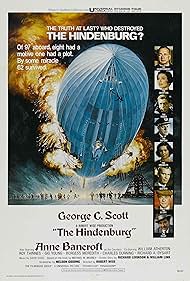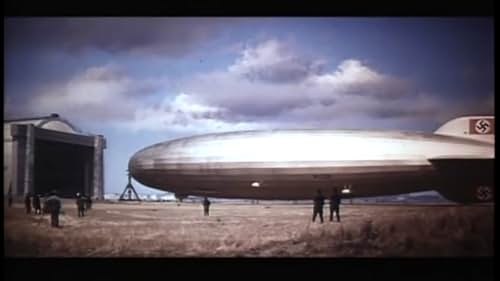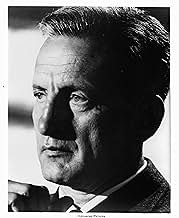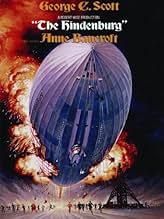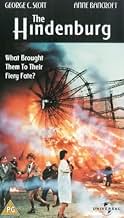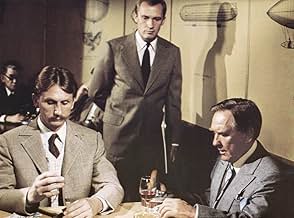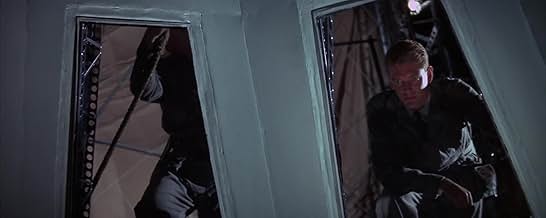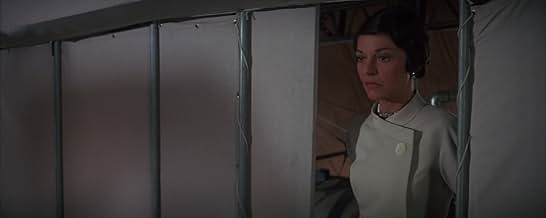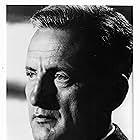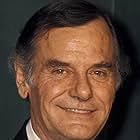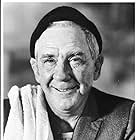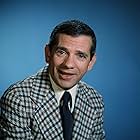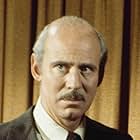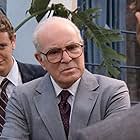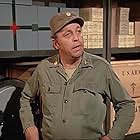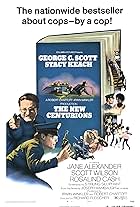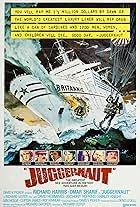IMDb RATING
6.3/10
6.7K
YOUR RATING
A chronicle of the Hindenburg disaster in which a zeppelin burst into flames.A chronicle of the Hindenburg disaster in which a zeppelin burst into flames.A chronicle of the Hindenburg disaster in which a zeppelin burst into flames.
- Nominated for 3 Oscars
- 2 wins & 4 nominations total
Richard Dysart
- Captain Ernst Lehman
- (as Richard A. Dysart)
Storyline
Did you know
- TriviaThe actual site of the Hindenburg crash, at Lakehurst Naval Air Station (now part of Joint Base Lakehurst-Dix-McGuire) is marked with a chain-outlined pad and bronze plaque where the airship's gondola landed. It was dedicated on May 6, 1987, the 50th anniversary of the disaster. Hangar #1, which still stands, is where the airship was to be housed after landing. It was designated a National Historic Landmark in 1968.
- GoofsThe incident depicting the Hindenburg's crew repairing the tear in the Zeppelin's cover as it drifts lower and lower over the Atlantic is factual; however, the event occurred on the Graf Zeppelin, not the Hindenburg.
- Quotes
Countess Ursula von Reugen: The German Air Force is not at all like it used to be, but then again, nothing is.
- Crazy creditsThe film opens with the 1936 Universal logo followed by a newsreel prior to the credits.
- Alternate versionsDeleted scenes were added back into the film for television airings, including one in which Goebbels shows Ritter a display of items used in attempted anti-Nazi attacks, including a bomb found on board the ocean liner "Bremen".
- ConnectionsEdited into Indiana Jones and the Raiders of the Lost Ark (1981)
- SoundtracksThere's a Lot To Be Said for the Fuehrer
Music by David Shire
Lyric by Ed Kleban (as Edward Kleban)
Performed by Peter Donat (uncredited), Robert Clary (uncredited)
Featured review
If a film about The Hindenburg had to be made it certainly would have been made in the decade of the disaster film, the Seventies. But this film labored under a unique handicap that none of the other disaster films of the decade had.
Unlike the sinking of the Titanic or the blowing up of Mount Krakatoa and certainly not like any of the potential but fictional disaster events that were film subjects, The Hindenburg was recorded on sight with newsreel cameras and on radio with Herbert Morrison's never to be forgotten broadcast. A lot of people now still remember it, let alone back in 1975.
What Robert Wise did and maybe more successfully than any other director was make full use of the famous newsreel footage and carefully edited it into his film, with slow motion techniques into the personal attempts by the cast to try and escape the holocaust. The Hindenburg received Oscar nominations for sound, cinematography, and art&set design with a special award for special effects. Yet no nomination for editing which the main plus this film has going for it.
Of course we don't know what ever really happened to the Hindenburg and the film takes account of all the theories put forth. It also uses the real names of the people who were passengers, crew, and officials of the Third Reich. The Nazi government had a big stake in the dirigible fleet they had built, they were as much propaganda value for them as Max Schmeling in boxing and Gottfried Von Cramm in tennis.
Of course had they had access to helium to float the big guys this might never have happened. But the USA had a near total monopoly on the world's helium and was not selling it to Hitler. Hence they used the lighter, but flammable hydrogen with the result of the tragedy.
George C. Scott and Anne Bancroft head the cast as a Luftwaffe official and a worldly old world countess traveling to the USA to visit her deaf mute daughter going to school for same in Boston. The Nazis didn't believe in helping those they considered defectives, another lovable quality about them.
The Hindenburg is a sobering and near factual account of what happened in Lakehurst, New Jersey that afternoon. It's one of the best of the Seventies disaster films and should not be missed.
Unlike the sinking of the Titanic or the blowing up of Mount Krakatoa and certainly not like any of the potential but fictional disaster events that were film subjects, The Hindenburg was recorded on sight with newsreel cameras and on radio with Herbert Morrison's never to be forgotten broadcast. A lot of people now still remember it, let alone back in 1975.
What Robert Wise did and maybe more successfully than any other director was make full use of the famous newsreel footage and carefully edited it into his film, with slow motion techniques into the personal attempts by the cast to try and escape the holocaust. The Hindenburg received Oscar nominations for sound, cinematography, and art&set design with a special award for special effects. Yet no nomination for editing which the main plus this film has going for it.
Of course we don't know what ever really happened to the Hindenburg and the film takes account of all the theories put forth. It also uses the real names of the people who were passengers, crew, and officials of the Third Reich. The Nazi government had a big stake in the dirigible fleet they had built, they were as much propaganda value for them as Max Schmeling in boxing and Gottfried Von Cramm in tennis.
Of course had they had access to helium to float the big guys this might never have happened. But the USA had a near total monopoly on the world's helium and was not selling it to Hitler. Hence they used the lighter, but flammable hydrogen with the result of the tragedy.
George C. Scott and Anne Bancroft head the cast as a Luftwaffe official and a worldly old world countess traveling to the USA to visit her deaf mute daughter going to school for same in Boston. The Nazis didn't believe in helping those they considered defectives, another lovable quality about them.
The Hindenburg is a sobering and near factual account of what happened in Lakehurst, New Jersey that afternoon. It's one of the best of the Seventies disaster films and should not be missed.
- bkoganbing
- Oct 30, 2009
- Permalink
- How long is The Hindenburg?Powered by Alexa
Details
- Release date
- Country of origin
- Language
- Also known as
- Die Hindenburg
- Filming locations
- Marine Corps Air Station Tustin, Tustin, California, USA(used for Naval Air Station Lakehurst - airship hangers still standing in 2022)
- Production company
- See more company credits at IMDbPro
Box office
- Budget
- $15,000,000 (estimated)
- Runtime2 hours 5 minutes
- Color
- Aspect ratio
- 2.35 : 1
Contribute to this page
Suggest an edit or add missing content

